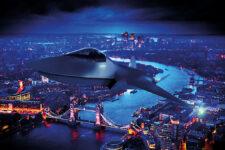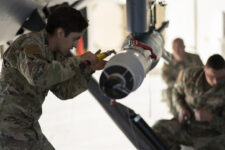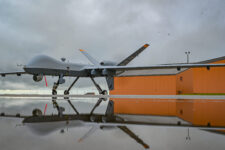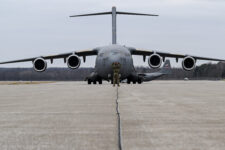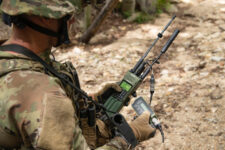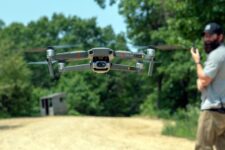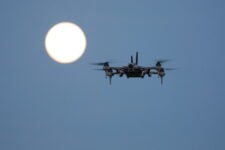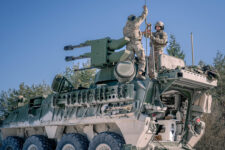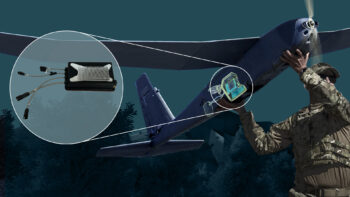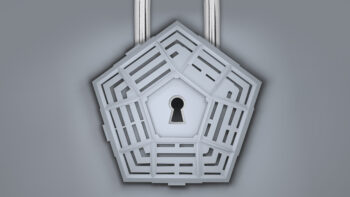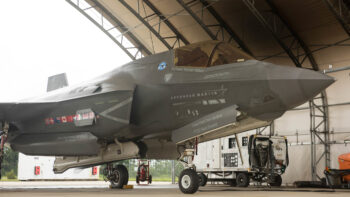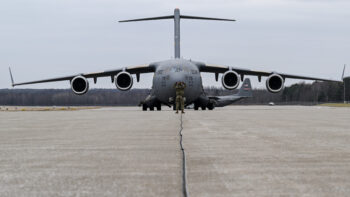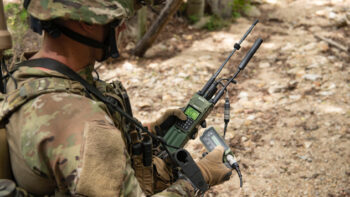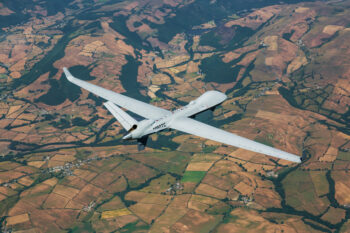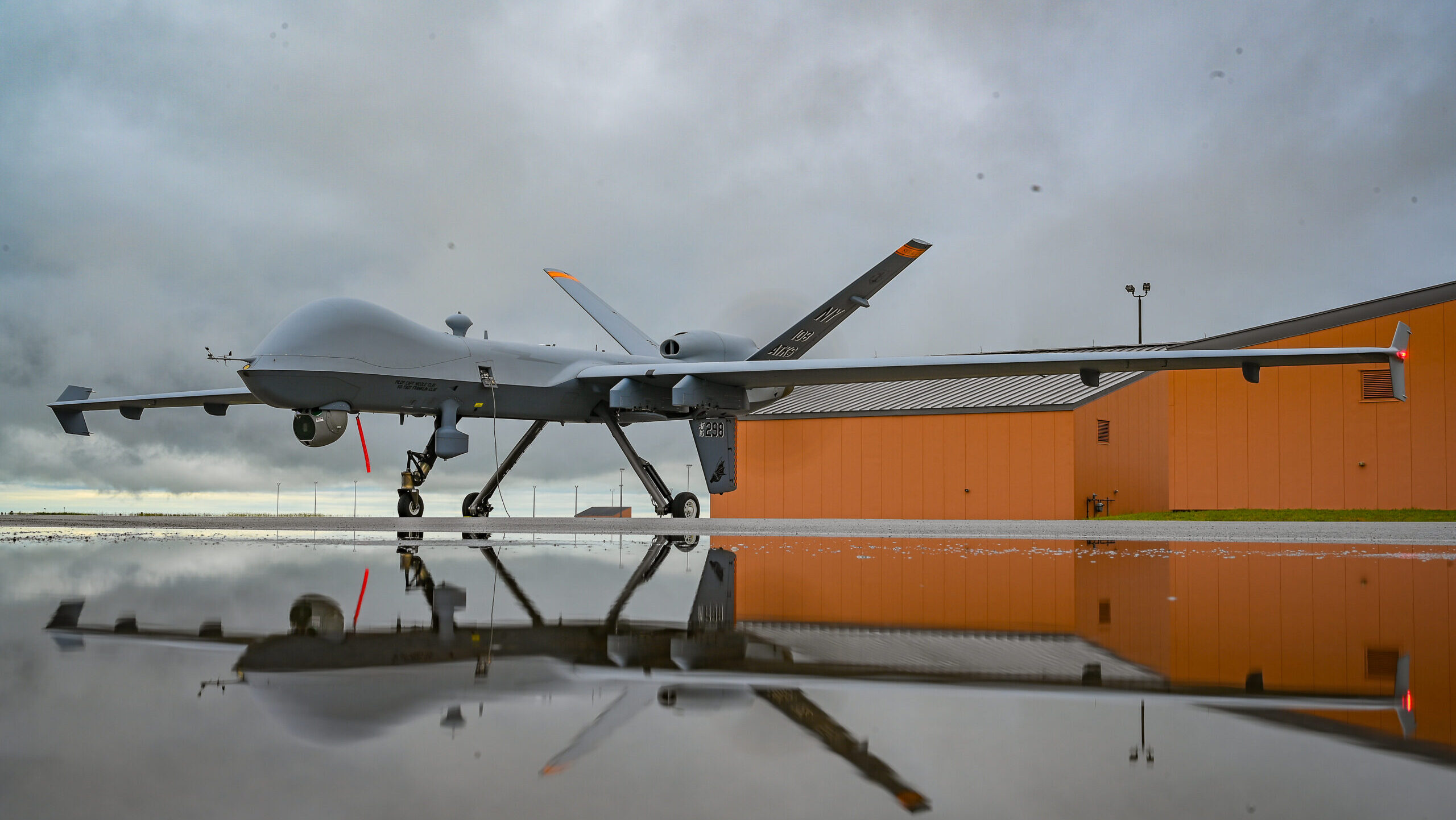
An MQ-9 Reaper assigned to the 174th Attack Wing, Syracuse, New York, prepares for flight during Exercise Iron Keystone at Fort Drum, New York, June 10, 2024. (US Air National Guard photo by Senior Airman Charles Casner)
DUBAI — A series of drone shootdowns by Iranian-backed militias in Lebanon and Yemen have revealed that the groups have more enhanced air-defense capabilities and tactics than previously believed, a development that should drive military commanders in Israel and the United States to review their air operations plans in the region, experts tell Breaking Defense.
However, it is not clear whether Iran has actually supplied new systems, or if the number of recent downings is simply due to increased operational tempo by the US and Israel — giving the Iranian-backed groups more shots at targets.
Since the outbreak of hostilities between the Lebanese-based Shiite group Hezbollah and Israel along the latter’s northern borders on October 8, 2023, the Israeli Air Force lost five medium altitude long-endurance (MALE) and high altitude long-endurance (HALE) drones to Hermes-450 and Hermes-900 to missiles fired by the militia fighters in south Lebanon. During the same period the United States lost three MQ-9 Reapers over Yemen to missiles fired by the Houthi militias.
Those numbers are more in line with the kinds of losses that would be expected in a peer-to-peer combat scenario, not what has historically been seen from Hezbollah and the Houthis, despite regular use of unmanned systems in the region. In fact, a 2019 Houthi shoot down of one MQ-9 drone is the most recent example on record before the most recent round of hostilities that kicked off on Oct. 8.
Given the recent success against such systems, experts believe the US and Israel may need to adjust their concept of operations while operating unmanned ISR platforms.
“A growing credible threat against coalition medium altitude long-endurance (MALE) and even high altitude long-endurance (HALE) drones can indeed undermine [Israel and US] air dominance (being able to do whatever they want in the air) and jeopardize their ability to obtain timely intelligence,” wrote Farzin Nadimi, senior fellow at the Washington Institute for Near East Policy, in an email.
Shaan Shaikh, deputy director and fellow for the Center for Strategic and International Studies (CSIS) Missile Defense Project, told Breaking Defense that the air defense systems of the Iranian-allied militias may eventually “deter or decrease Israeli and U.S. drone operations in Yemen and Lebanon. Alternatively, Israeli and U.S. operators may choose to simply eat the costs and continue their intelligence, surveillance, and reconnaissance (ISR) operations.”
Said Bruce Bennett, senior adjunct international defense researcher at RAND Corporation, “Israel and the United States will need to gradually adjust their operating procedures. Those adjustments would likely involve some combination of operating in a different manner, enhancing electronic and other countermeasures, and trying to identify and suppress adversary SAMs.”
Experts are more divided when it comes to the question of why air defense systems may be showing more effectiveness: whether the primary cause is new weapons in the field, or if its increased intensity of air operations.
“Unmanned aerial systems are relatively slow and vulnerable aerial platforms that are most effective in benign air defense environments. It is clear that the air defense environment in Lebanon and Yemen is getting more challenging — probably due to the arrival of new systems,” said Michael Eisenstadt, director of the Military and Security Studies Program at the Washington Institute for Near East Policy.
A report by Eisenstadt’s think tank said that Hezbollah fighters are operating the Iranian version of the Russian Igla manpads known as Misagh-2 and have likely received Khordad-15 systems as well and possibly managed to transfer it from the Syria theater to Lebanon. Hezbollah has reportedly also acquired the Iranian Sayyad-2, and may be eyeing the Russian-made Pantsir-S1.
Nadimi agreed with the new hardware thesis, stating that “the recent successes in downing them (drones) is due to arrival of new hardware from Iran and maturation of their operators in properly using them.”
“U.S. adversaries are likely enhancing the effectiveness of their surface-to-air missiles — a standard military competition,” Bennett said. “Over time the effective altitude of SAMs can be adjusted with upgrades, and that may be happening now.”
However, Shaikh said while new weapons likely plays a part, “The recent uptick in shootdowns is likely due to increased deployments of these drones while Houthi and Hezbollah air defenders on a high-alert.”
What Comes Next
On June 10, Hezbollah attempted to shoot down one of the Israeli jetfighters. Even though the attempt failed, it has raised the question about the potential risks to the Israeli air dominance that was not seriously challenged since the Israeli invasion of Lebanon in 1982.
However, experts believe shooting down drones is one thing, while downing the much faster and more sophisticated jet fighters is something else, especially if Israel and the United States keep adjusting their air operations and improving their technology to deal with evolving threats.
“The Houthi and Hezbollah shootdowns of US and Israeli drones have not meaningfully impacted operations, and US and Israeli warplanes still target positions in Yemen and Lebanon respectively with impunity,” said Andie Parry, Middle East Security Program Researcher at the Institute for the Study of War.
Bennett said that “Israel and the United States will need to gradually adjust their operating procedures. Those adjustments would likely involve some combination of operating in a different manner, enhancing electronic and other countermeasures, and trying to identify and suppress adversary SAMs.”
“The Israelis and United States can use far more capable aircraft — the F35, for example — if they feel that air defenses will challenge them,” Parry told Breaking Defense.
Both Hezbollah and the Houthi commanders claim they have launched military operations against Israel and the United States in solidarity with the Palestinian group Hamas that is under a major land offensive by Israel in the Gaza Strip. Hamas is a member of the Iranian-led Axis of Resistance — that groups militias in Iraq, Lebanon, Syria, and Yemen bound on the destruction of Israel. While Hezbollah opened the front in south Lebanon against Israel, the Houthis have been targeting commercial ships in the Red Sea and Bab el-Mandeb Strait that are allegedly affiliated with Israel or headed to Israeli ports.
Finland selects SNC’s RAPCON-X for MVX border surveillance jet program
The pair of new aircraft are set to replace Dornier 228 types, with production out of SNC’s integration center in Hagerstown, Maryland.

